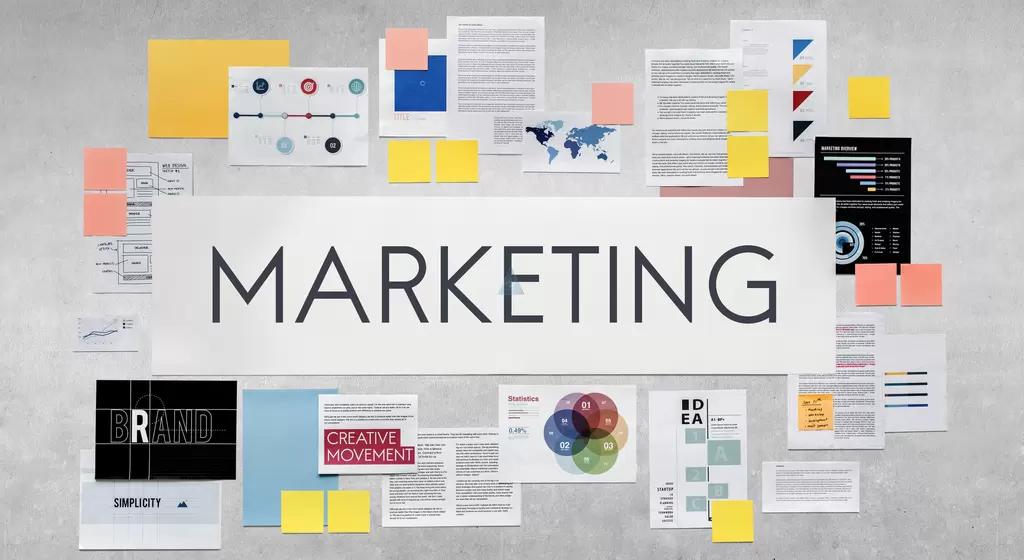- Call Us: +905323690748
- EMail: [email protected]
- Akarca, Mustafa Kemal Blv. No:173/B, 48300 Fethiye/Muğla

How to Create a Successful Multi-Channel Marketing Campaign
Creating a successful multi-channel marketing campaign requires a cohesive strategy across various platforms to reach your audience effectively. Start by identifying your target audience and understanding how they engage with different channels such as social media, email, and paid ads. Develop consistent messaging that resonates with your audience, ensuring that each channel complements the other while maintaining a unified brand voice. Use data to track engagement and performance on each platform, adjusting your strategy to optimize results. By integrating your efforts across multiple channels, you can increase brand visibility, enhance customer engagement, and drive better results for your campaign.
Creating a successful multi-channel marketing campaign is essential for businesses looking to reach their audience across various touchpoints. In today’s digital landscape, consumers interact with brands through multiple channels, including social media, email, paid ads, websites, and even offline platforms. A well-executed multi-channel marketing campaign ensures that your message is consistent, your audience is reached where they are most active, and your efforts are integrated for maximum impact.
This guide will outline the key steps involved in creating and executing a successful multi-channel marketing campaign, helping your brand increase visibility, enhance customer engagement, and drive better results.
1. Define Your Goals and Objectives
Before you begin planning your multi-channel marketing campaign, it is essential to define clear goals and objectives. What do you want to achieve with this campaign? Are you looking to raise brand awareness, drive website traffic, generate leads, increase sales, or boost customer retention?
By identifying your goals upfront, you can tailor your strategy to align with these objectives. For example, if your goal is to generate leads, your focus might be on channels that excel at lead generation, such as email marketing or landing pages with lead forms. If your goal is brand awareness, social media and display ads might be more appropriate.
Your goals will also influence how you measure success. Establish key performance indicators (KPIs) that align with your objectives, such as engagement rates, conversion rates, click-through rates, or sales. These KPIs will guide your campaign and help you track progress.
2. Understand Your Target Audience
A successful multi-channel marketing campaign requires a deep understanding of your target audience. Who are they, and where do they spend their time? What types of content do they engage with, and what motivates them to take action?
To gather insights about your audience, use data from various sources, including Google Analytics, social media insights, email marketing platforms, and customer surveys. Look at key demographics such as age, location, gender, and interests, as well as behavioral data like past interactions with your brand, purchase history, and website visits.
Understanding your audience’s preferences and behaviors will help you choose the right channels for your campaign and tailor your messaging to resonate with them. For example, younger audiences may be more active on Instagram and TikTok, while older demographics may prefer email or Facebook.
Additionally, consider creating buyer personas to represent different segments of your audience. These personas can guide your content strategy and ensure that your messaging speaks directly to the needs and preferences of each group.
3. Choose the Right Channels
With a clear understanding of your audience, the next step is to select the channels that will best reach them. Multi-channel marketing involves using a combination of platforms to deliver your message, but not all channels are suitable for every business or audience. The key is to focus on the platforms where your target audience is most active.
Common channels in a multi-channel marketing campaign include:
- Social Media: Platforms like Facebook, Instagram, Twitter, LinkedIn, and TikTok offer opportunities to engage with audiences through organic posts, paid ads, and influencer partnerships.
- Email Marketing: Email remains a powerful tool for building relationships, nurturing leads, and driving conversions. Personalized email campaigns can be highly effective in delivering targeted content.
- Paid Advertising: Google Ads, Facebook Ads, and display ads can drive traffic, increase visibility, and generate leads. Paid ads allow for precise targeting based on demographics, behaviors, and interests.
- Content Marketing: Blog posts, videos, infographics, and other forms of content can educate and engage your audience. Content marketing also supports SEO efforts, helping you attract organic traffic.
- SEO (Search Engine Optimization): Optimizing your website and content for search engines helps you attract organic traffic. SEO is a long-term investment but can deliver lasting results.
- SMS Marketing: SMS messages can be a direct and effective way to reach customers, especially for time-sensitive promotions or updates.
- Offline Channels: Depending on your business, offline channels like print advertising, direct mail, or events can complement your digital efforts, providing a more comprehensive approach.
The key to a successful multi-channel strategy is to ensure that each channel complements the others. For example, you might use paid ads to drive traffic to a blog post, which then encourages visitors to sign up for your email list. Or you may promote a social media contest through email, encouraging your audience to engage on multiple platforms.
4. Develop Consistent Messaging and Branding
One of the biggest challenges in multi-channel marketing is maintaining consistent messaging across all platforms. While each channel may require slightly different content formats or tones, the core message and brand identity should remain the same.
Start by developing a strong value proposition that clearly communicates what your brand offers and why it’s unique. This value proposition should be at the heart of all your messaging, regardless of the platform.
Next, ensure that your branding is consistent across all channels. This includes using the same logo, color scheme, and fonts, as well as maintaining a consistent tone of voice. Whether your audience is reading an email, seeing a social media post, or clicking on a paid ad, they should instantly recognize your brand.
That said, it’s important to adapt your content to fit the platform. For example, while your messaging may be consistent, the tone you use on LinkedIn will be more professional than the tone you use on Instagram. Similarly, a blog post will be more in-depth than a social media update, but both should align with your overall messaging strategy.
Consistency helps build trust with your audience and ensures that your brand is easily recognizable, no matter where your audience interacts with you.
5. Create a Cohesive Customer Journey
A successful multi-channel marketing campaign should guide your audience seamlessly from one touchpoint to the next, creating a cohesive customer journey. Think of each channel as a stepping stone that leads your audience closer to conversion.
For example, a potential customer might first see your brand through a paid ad on Facebook, visit your website to learn more, and then sign up for your email newsletter. From there, they might receive personalized emails based on their browsing history, eventually leading them to make a purchase.
To create a smooth customer journey, ensure that each channel and piece of content is strategically linked. Use clear calls-to-action (CTAs) that guide users toward the next step, whether it’s visiting your website, signing up for your newsletter, or making a purchase. Additionally, retargeting ads can help bring users back to your website if they’ve previously engaged but didn’t convert.
By mapping out the customer journey and making sure each channel is integrated, you can create a more cohesive and effective multi-channel marketing campaign.
6. Leverage Data and Analytics
Data plays a critical role in the success of any multi-channel marketing campaign. By tracking the performance of each channel, you can identify what’s working, what’s not, and where adjustments need to be made.
Key metrics to monitor include:
- Engagement Rates: How are users interacting with your content on each platform? High engagement rates indicate that your content is resonating with your audience.
- Conversion Rates: Which channels are driving the most conversions? Are users signing up for your email list, making purchases, or completing other desired actions?
- Traffic Sources: Where is your website traffic coming from? Are specific channels generating more traffic than others?
- Click-Through Rates (CTR): How many users are clicking on your ads or CTAs? A low CTR may indicate that your messaging or targeting needs refinement.
- Return on Investment (ROI): Are your marketing efforts delivering a positive return? Calculate the ROI for each channel to determine where your budget is best spent.
Use analytics tools like Google Analytics, Facebook Insights, and email marketing platforms to gather data and track the performance of your campaign. Regularly review your KPIs to ensure that your campaign is on track and make adjustments as needed to optimize performance.
7. Test, Optimize, and Iterate
No marketing campaign is perfect from the start, and a successful multi-channel strategy requires continuous testing and optimization. A/B testing allows you to compare different versions of your content, ads, or landing pages to see which performs best.
For example, you might test two different email subject lines to see which one generates a higher open rate. Or, you could test two variations of a Facebook ad to determine which one drives more conversions.
By testing different elements of your campaign, you can identify what resonates most with your audience and refine your strategy accordingly. Additionally, as you gather more data, you can continue to optimize your campaign for better results.
Marketing is an ongoing process, and the most successful campaigns are those that are regularly reviewed and improved based on performance data.
Conclusion
Creating a successful multi-channel marketing campaign requires careful planning, a deep understanding of your audience, and the ability to execute a cohesive strategy across multiple platforms. By defining your goals, choosing the right channels, maintaining consistent messaging, and leveraging data to optimize your efforts, you can create a campaign that engages your audience and drives measurable results.
A well-executed multi-channel marketing campaign not only increases brand visibility but also ensures that your audience experiences a seamless and engaging journey with your brand across all touchpoints. As you refine and optimize your strategy, you’ll be able to scale your efforts and achieve long-term success in the digital marketing landscape.















